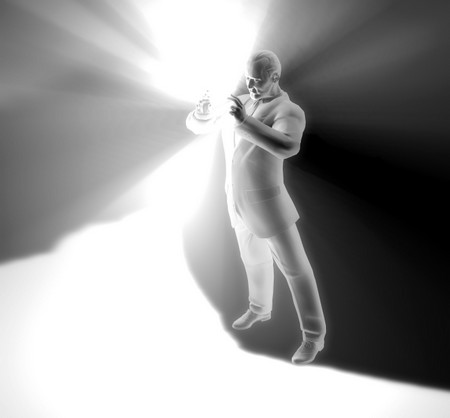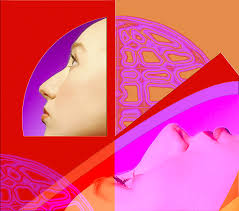 Starting to the enterprise aspect of our topic, we can say that a large industry of educational materials is invading the world markets today using individuals as their brainstorming agents. Teachers, students, families are all being treated as commodities. Every year all sorts of techniques appear in the educational market. Teachers are postmodern pilgrims of our age, working as disseminators of learning techniques, of knowledge, of information. All are devised to motivate and control the on going educational industry.
Starting to the enterprise aspect of our topic, we can say that a large industry of educational materials is invading the world markets today using individuals as their brainstorming agents. Teachers, students, families are all being treated as commodities. Every year all sorts of techniques appear in the educational market. Teachers are postmodern pilgrims of our age, working as disseminators of learning techniques, of knowledge, of information. All are devised to motivate and control the on going educational industry.
The process of building an enthusiasm for learning in this hectic age of ours is really a very challenging job. We can imagine it as a battlefield where individual wants and needs of the learner, the goals of the parents, the widespread goals of educational institutions, private educational centers of Turkey and the goals of society in broad sense of the word, are engaged in constant row.
As inventors of technology, the ‘developed’ counties are in master positions against ‘under-developed’ ones. Users or appliers of technology may be considered as slaves. Turkey is an open market for all kinds of technologies but we may be called masters of imported goods if we do not like the term ‘slave’.
Turkish high school students are stuffed with an excess of educational material unable to know how to apply their skills outside of school. But thanks to quiz shows of TV which make millionaires out of tenacious memories, we can have a chance to be ‘somebody’. Maybe teachers should be oriented to endow students with that kind of commercialized knowledge.
Education and being educated take their toll on students and families in Turkey. A large percent of Turkish population is under an enormous constraint on account of anxieties caused by the educational system. Since spiritual richness is devalued by economic exigencies, nearly every one of us is after quick gains leaving morals and ethics amiss.
There are no traditional role models any more. No examplary heroes from family circles. Heroes arise among celebrities who also serve as role-models. Media members who introduce these new heroes to the public should be educated properly first, as long as they are new age teachers for the masses. This may count as a kind of open education. Since knowledge is considered as a human construct, the most suitable construction for our survival should be created by mass-media.
To educate students for the business world, for the great enterprises, we need great visions for educating teachers subordinated to this entrepreneurial system of education. Both students and teachers have fallen prey to education in the 21st century. The world is relentlessly commanded by financial kingdoms. Who cares whether peoples of the world are properly educated or not! We all are produced according to harsh, competitive capitalistic expectations.
Excessive work and hardship in teacher training in USA, as shown in the seminar titled ‘Becoming a Teacher’-August 2009 at Bogazici University in Istanbul, are seemingly for the benefit of the people in general but looking from the illeteracy perspective in the States, good teaching is not enough for learning. Can we say that is because people have generally lost trust in institutions which cannot prevent the world from being torn down to a chaotic hell: Famine, redundancy, inequality, incessant wars, massacres everywhere. We as humans have no time for self-discovery in this mind-blowing world.
We would better focus on character development, ‘sensitivity training’ based on innate benevolence, if one may trace an inkling of it in us, human beings. A life lived closer to nature could be better than nurture. It will not be surprising if we all become cyborgs, half human, half automats in the nearest future. We must be reminded of our old moral values by the God in ourselves if it is not dead already in this Age of Digital Slavery where new ethical problems arise together with technology, new life styles and destructive social changes.
With the aid of creativity and innovation , can we imagine of a future education that will be a symbiosis of knowledge and information to meet the new life demands?
We are widely informed in this Digital Age of ours. We know a bit of everything, one can say we are erudite readers as long as we can spend long hours in front of the monitor without any complaints. Innumerable sites offer us a rich variety of information and knowledge on all fields of research. Do you wish to be informed about life and deeds of Oscar Wilde? Just put down his first and last names in the google. You will be informed until you will not feel your buttocks under your stylish velvet pants on the chair. Your neck will get stiff as if you swallowed a walking stick. Your watering starry eyes will reflect the impression of a mourning widow.
Every one of us as postmodern individuals is doomed to be overeducated by information technologies, by postindustrial society’s highly competitive expectations on creativity and innovation and by postpsychoanalysis’ chaotic debates on whether to choose between the whole and the fragmented selves for case studies.
The educational problems arise while molding students for modern centers of production or for postindustrial social formations such as centers of consumption, shopping malls, financial services or entertainment centers. Since attaining knowledge is a deep down, tiresome and long process compared to the informative one, in the general sense, we have to welcome shortcuts in education in order to keep pace with the ‘speedy Gonzales’ walks of posteducation.
Our aim in this paper is to draw a creative and innovative poststudent picture through a philosophical symbiosis of knowledge and information: A student who smartly adapts the Platonic phrase ‘Know Thyself’ into its popular variety ‘Inform Yourself’ by your creative and innovative skills.
Just as there is a continuity between modernity and post modernity, between creativity and innovation, it is expected to exist one such continuity between knowledge and information. Knowledge carries modernity’s faith in rationality and science as it uncovers the natural order of things. Its main task is human betterment, nevertheless it is questioned either epistemologically and metaphysically. By the continuation of disease, famine, want and destruction, that ‘noble’ task is rendered somehow incredible. The progressive and humanizing missions of universal and transcendental foundations of knowledge proved themselves to be false by inhuman practices of power, examples of which exist everywhere. Yes, knowledge is power, but informative technologies are more powerful in making the posthumans reject universal claims and more successful in making them accept the partial, the local and the specific.
In education as well there is no authorising position of the former mass-student production. As Kisho Kurokawa states in the Philosophy of Symbiosis: “The transformation from the age of the machine to the age of life is a simultaneous transformation from industrial society to information society.” (Kurokawa 1994:43)
Ayten Suvak
(To be continued)





